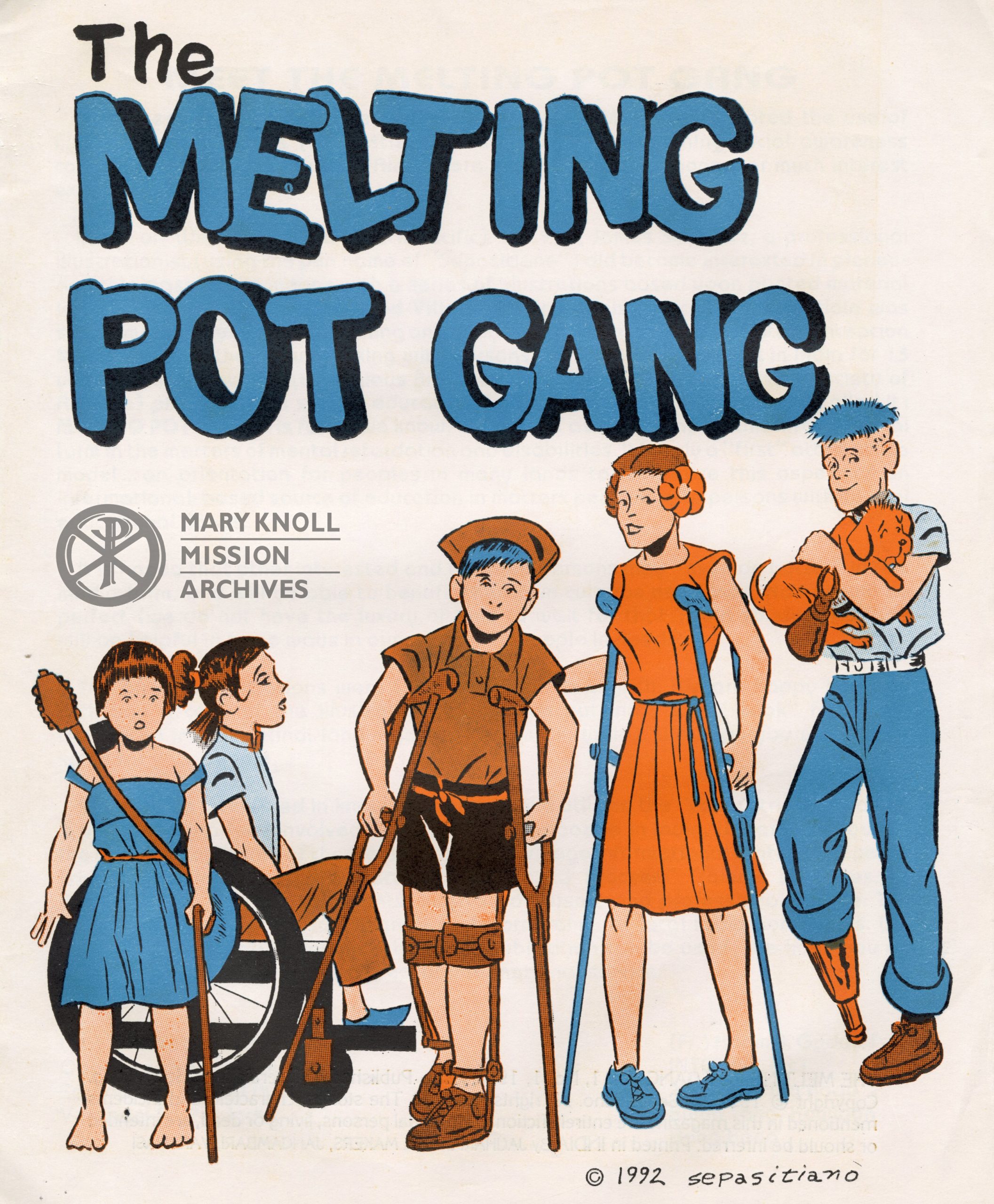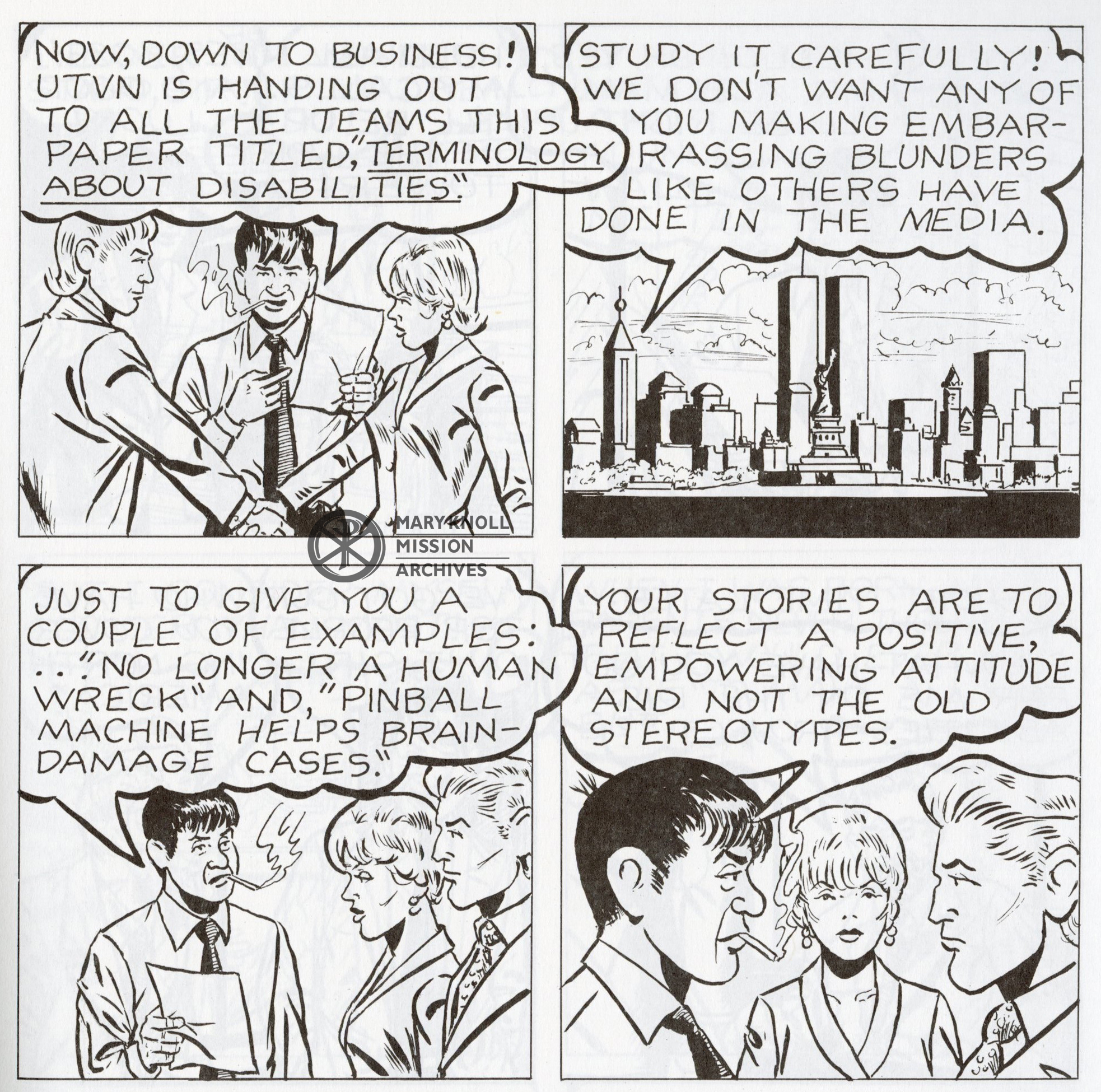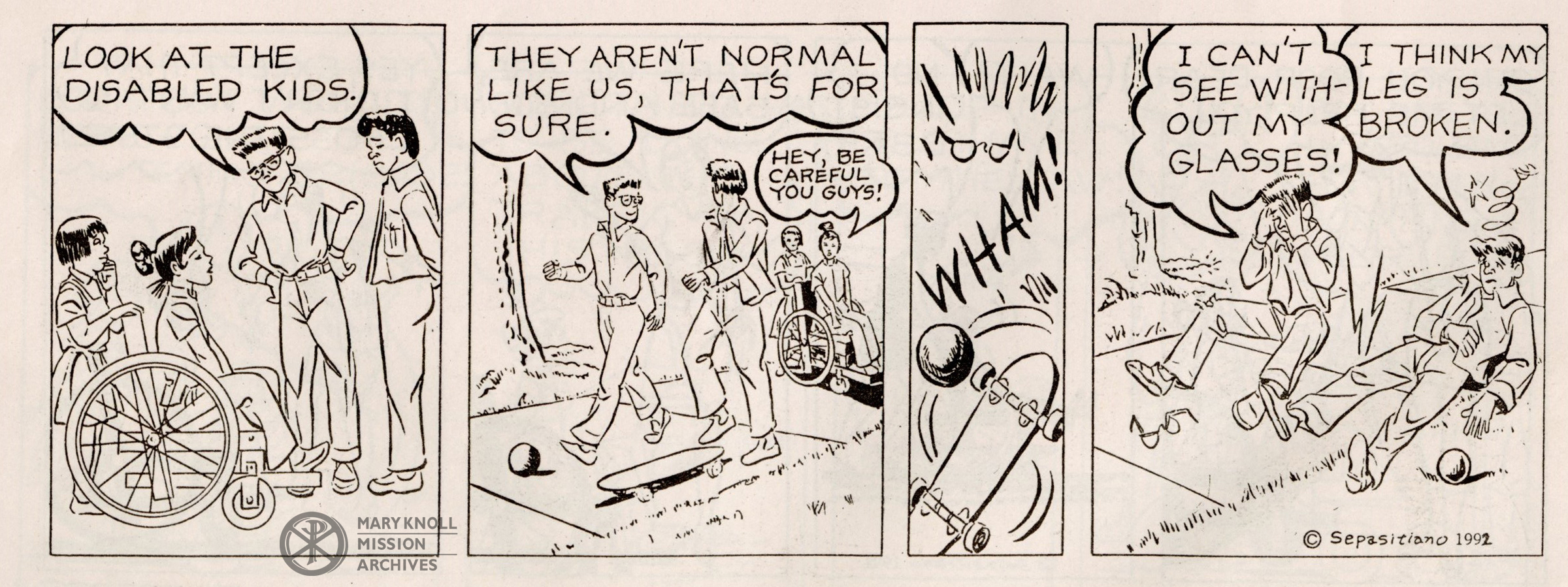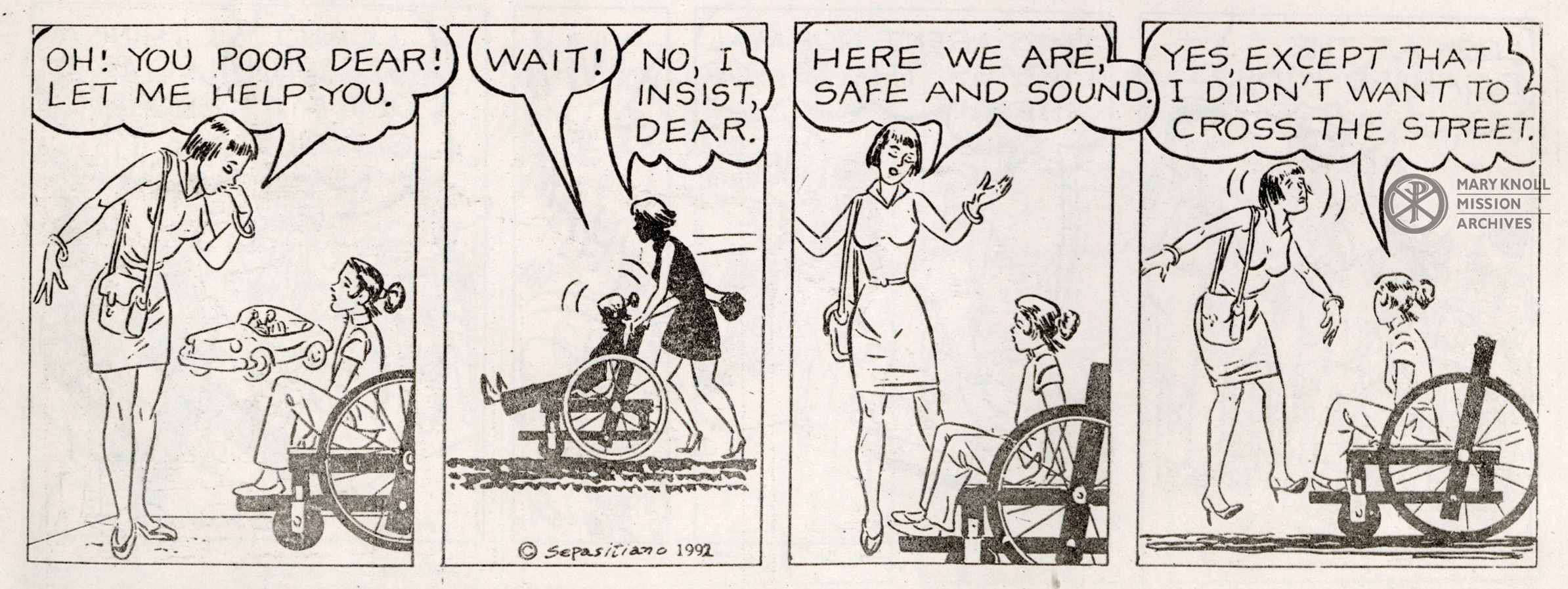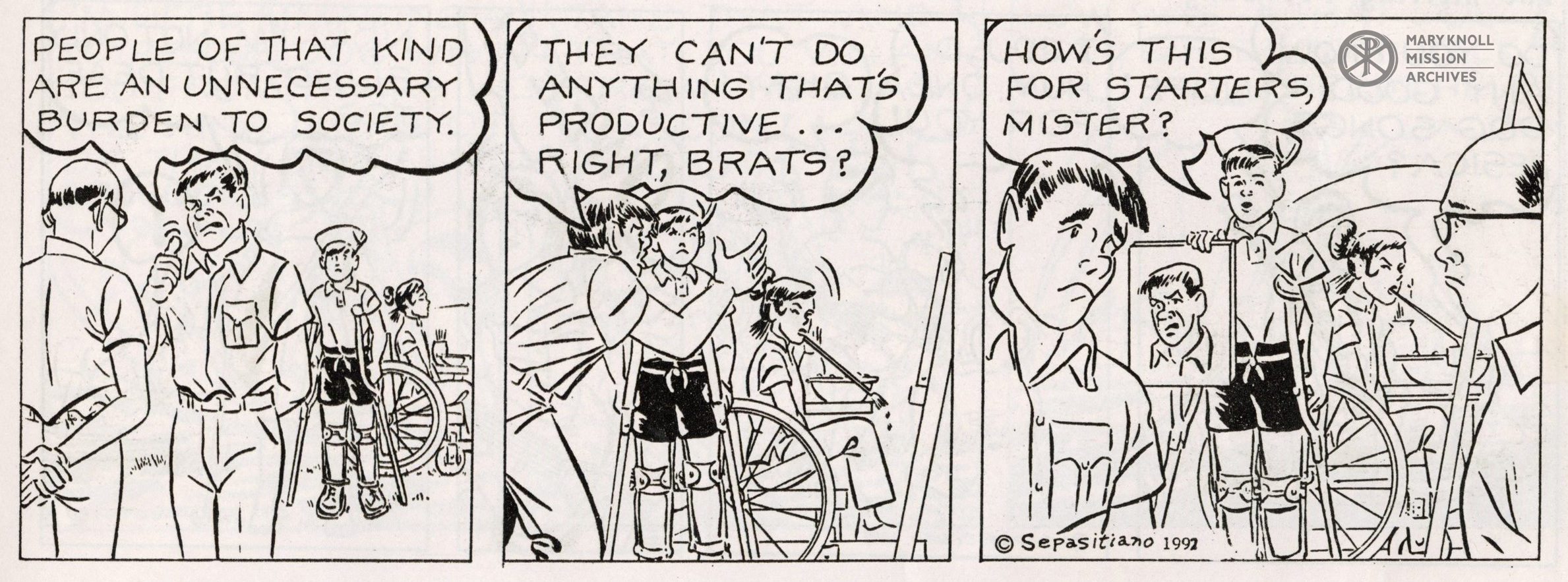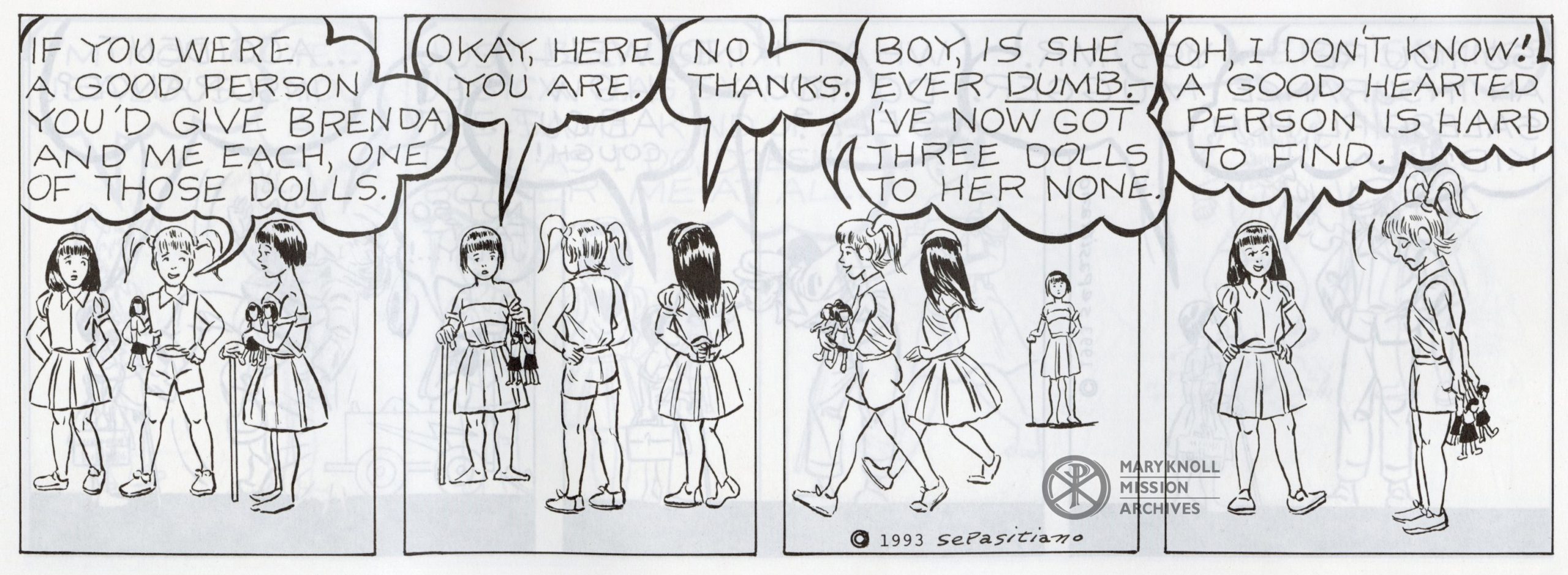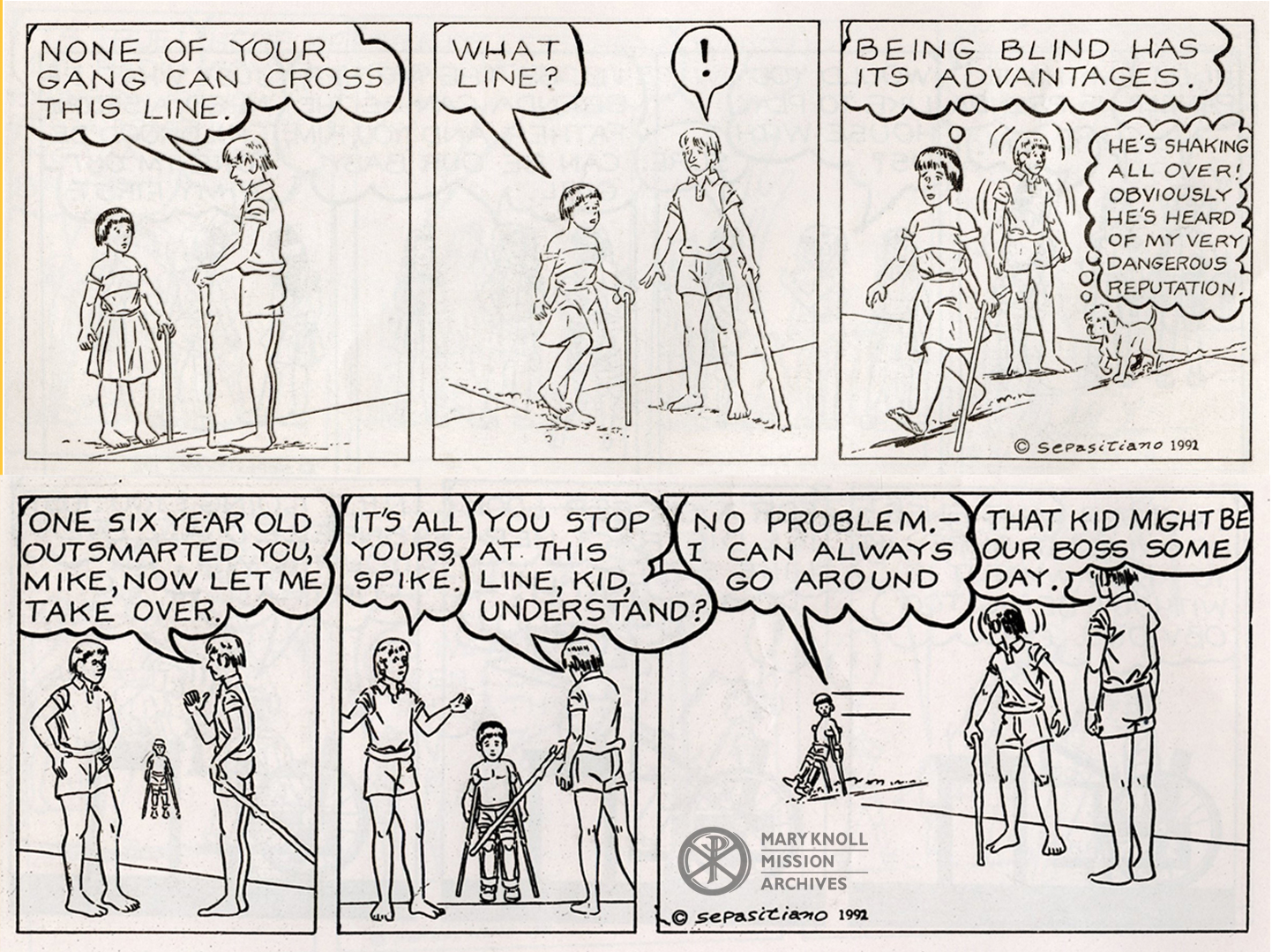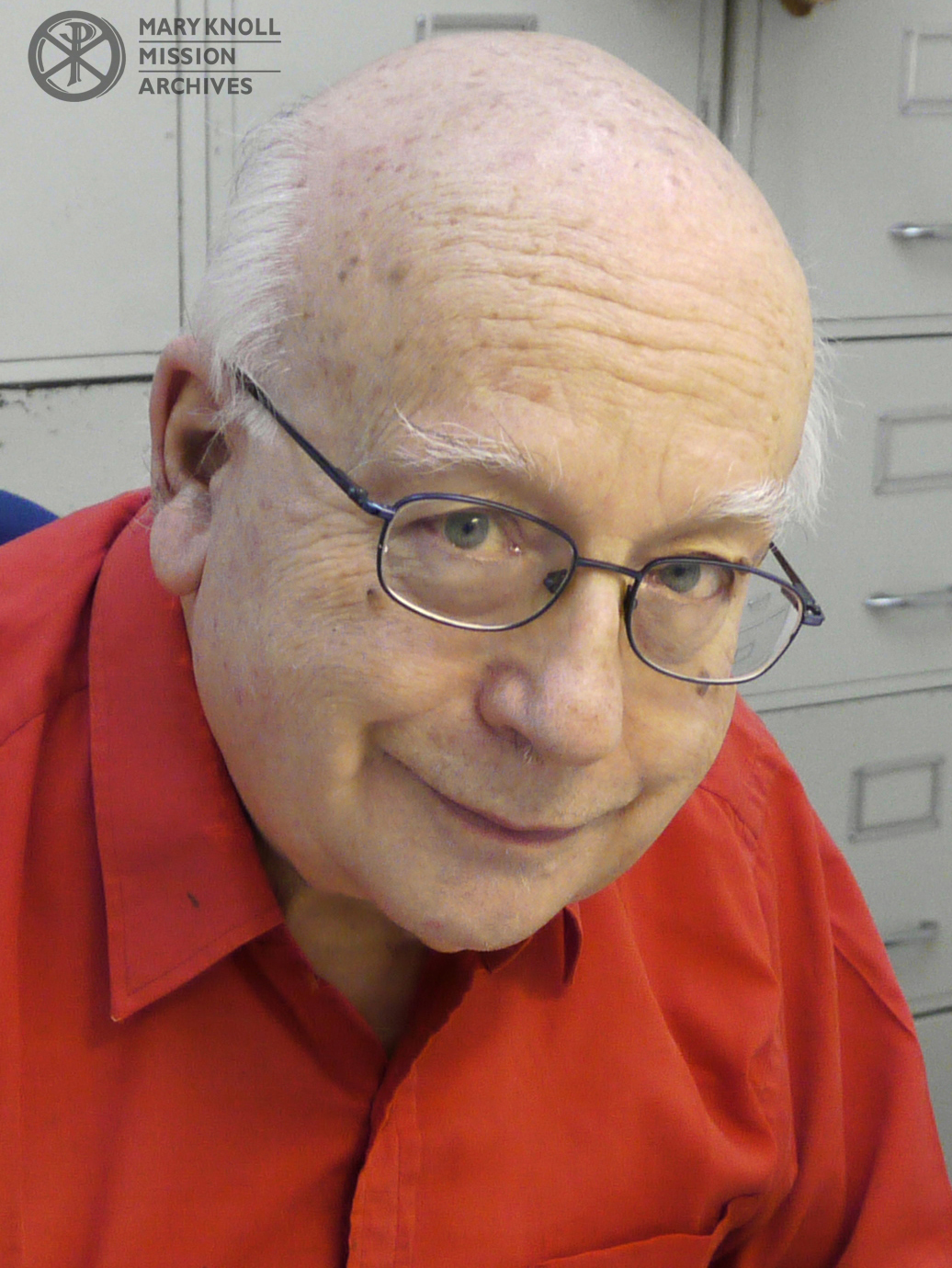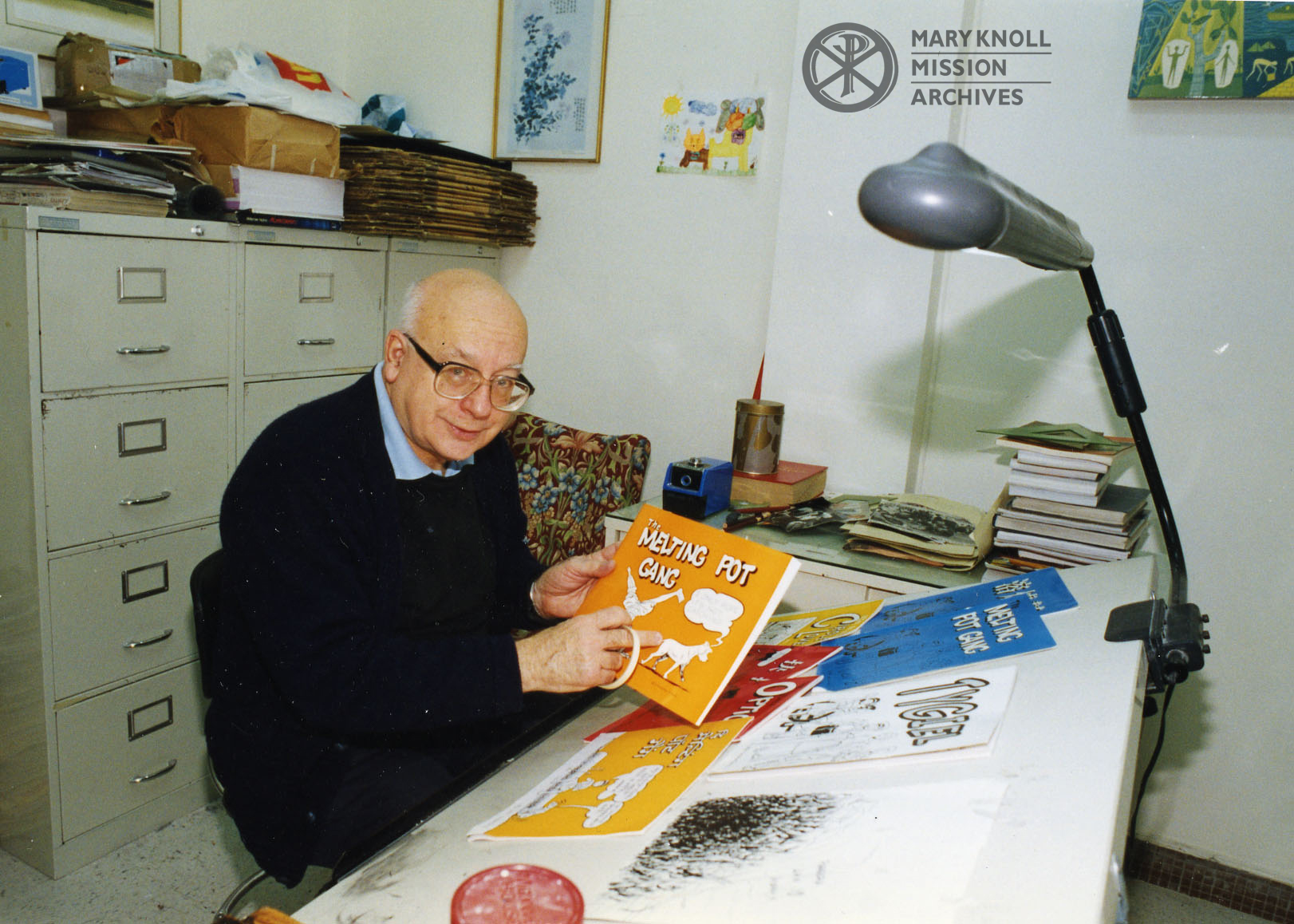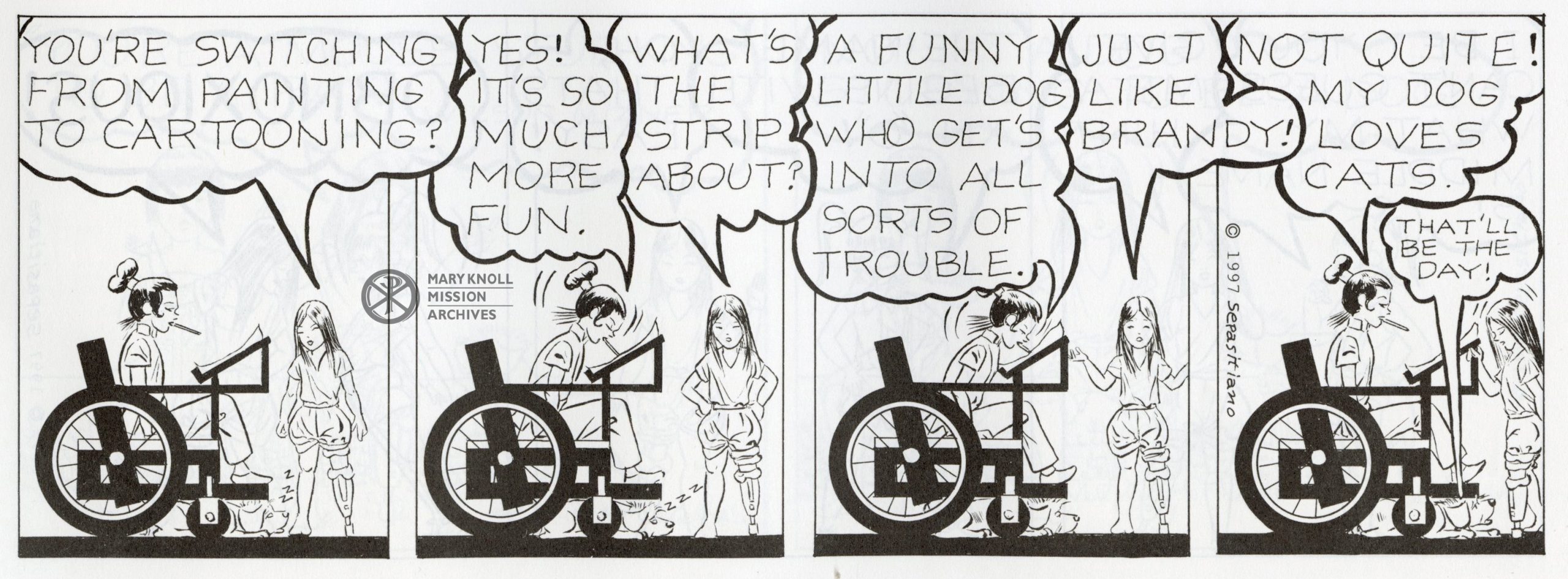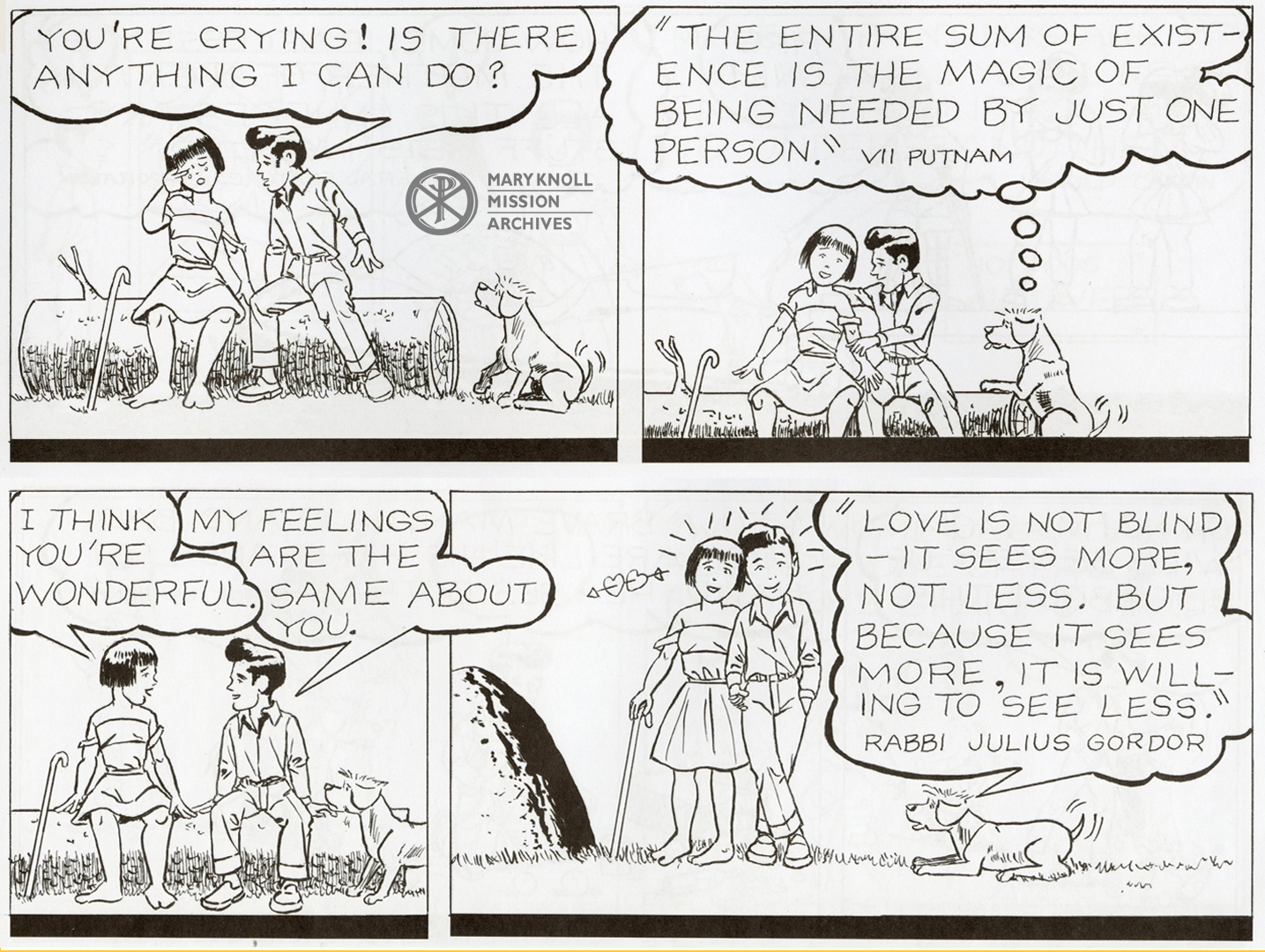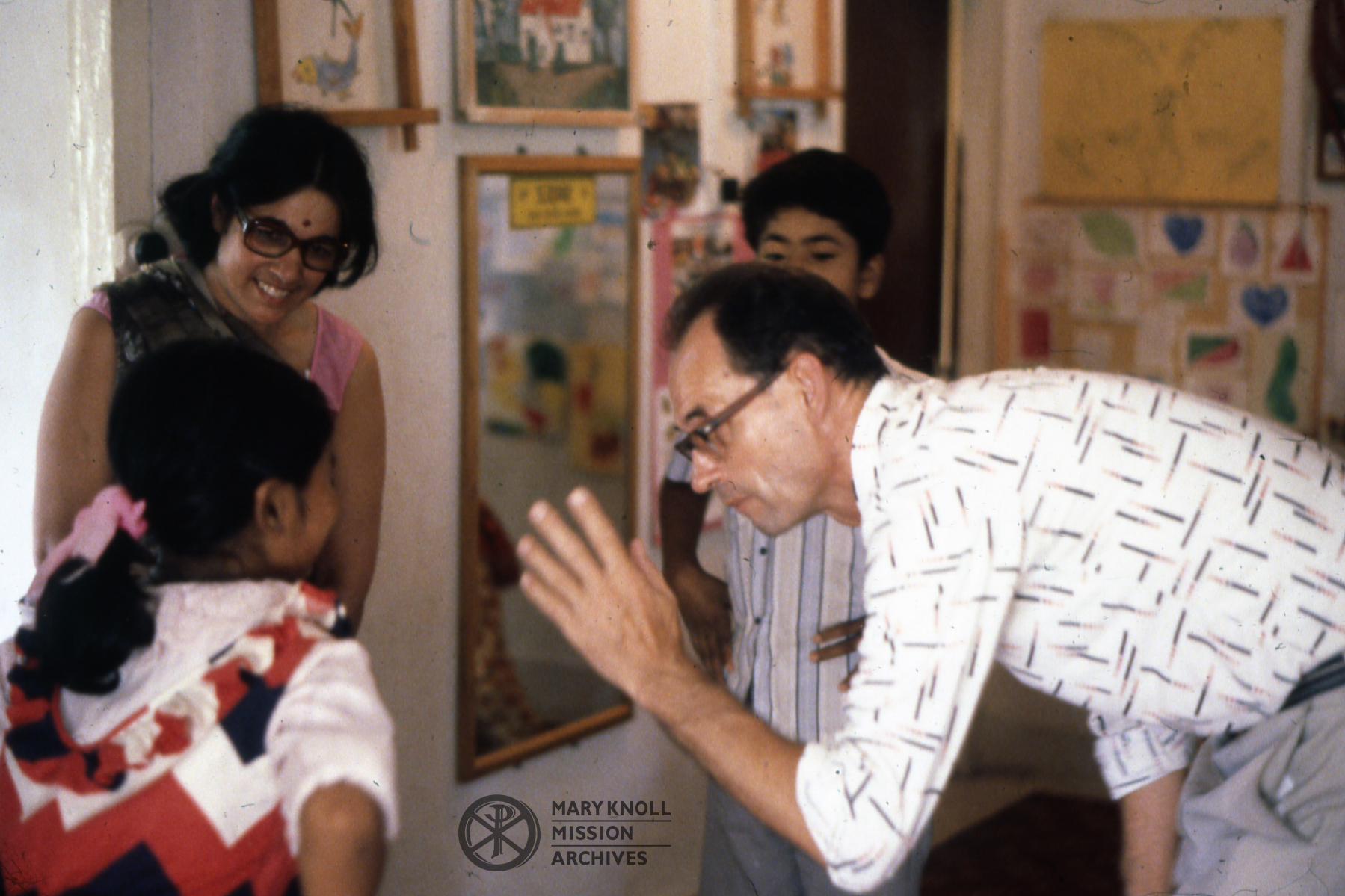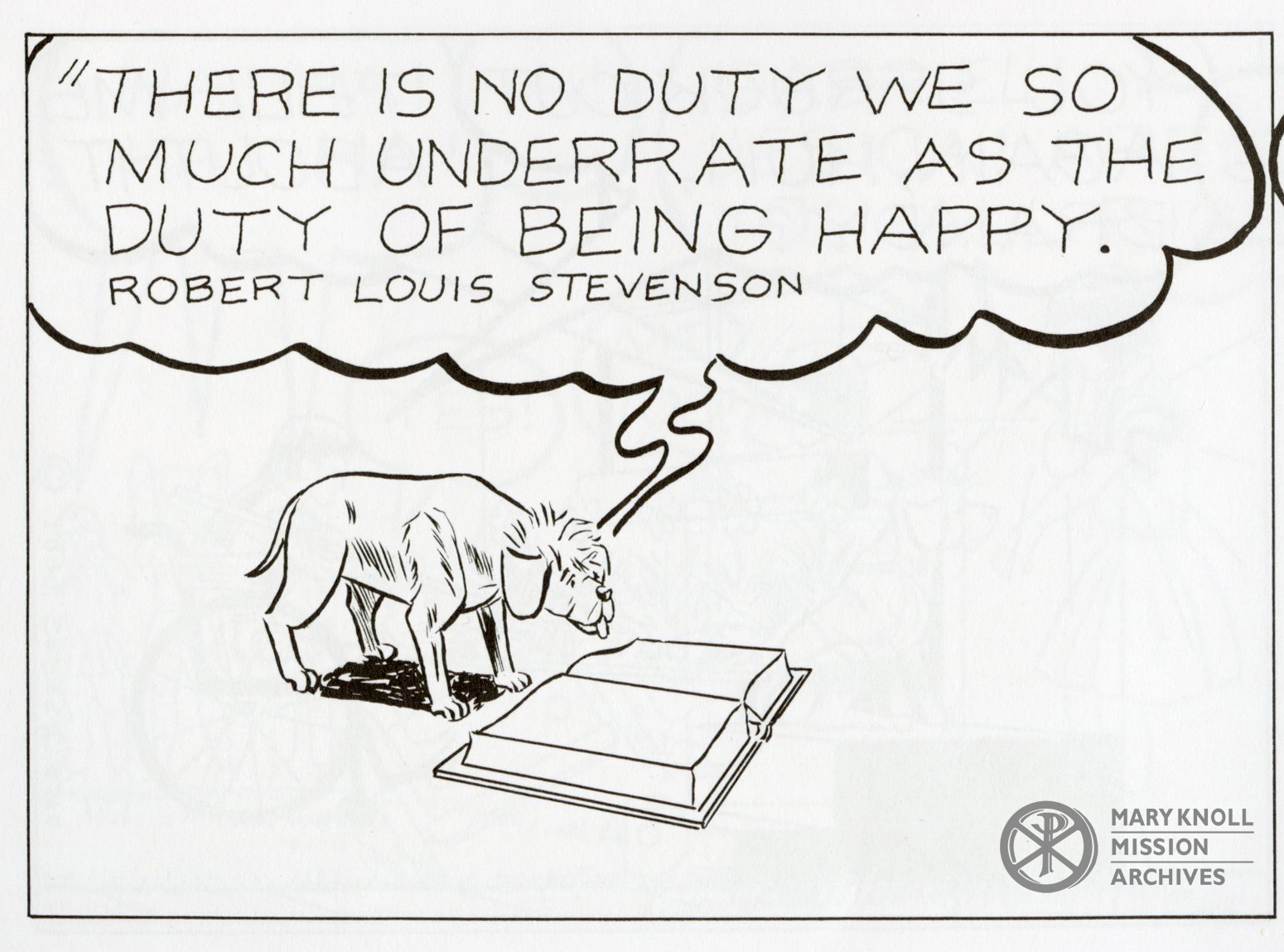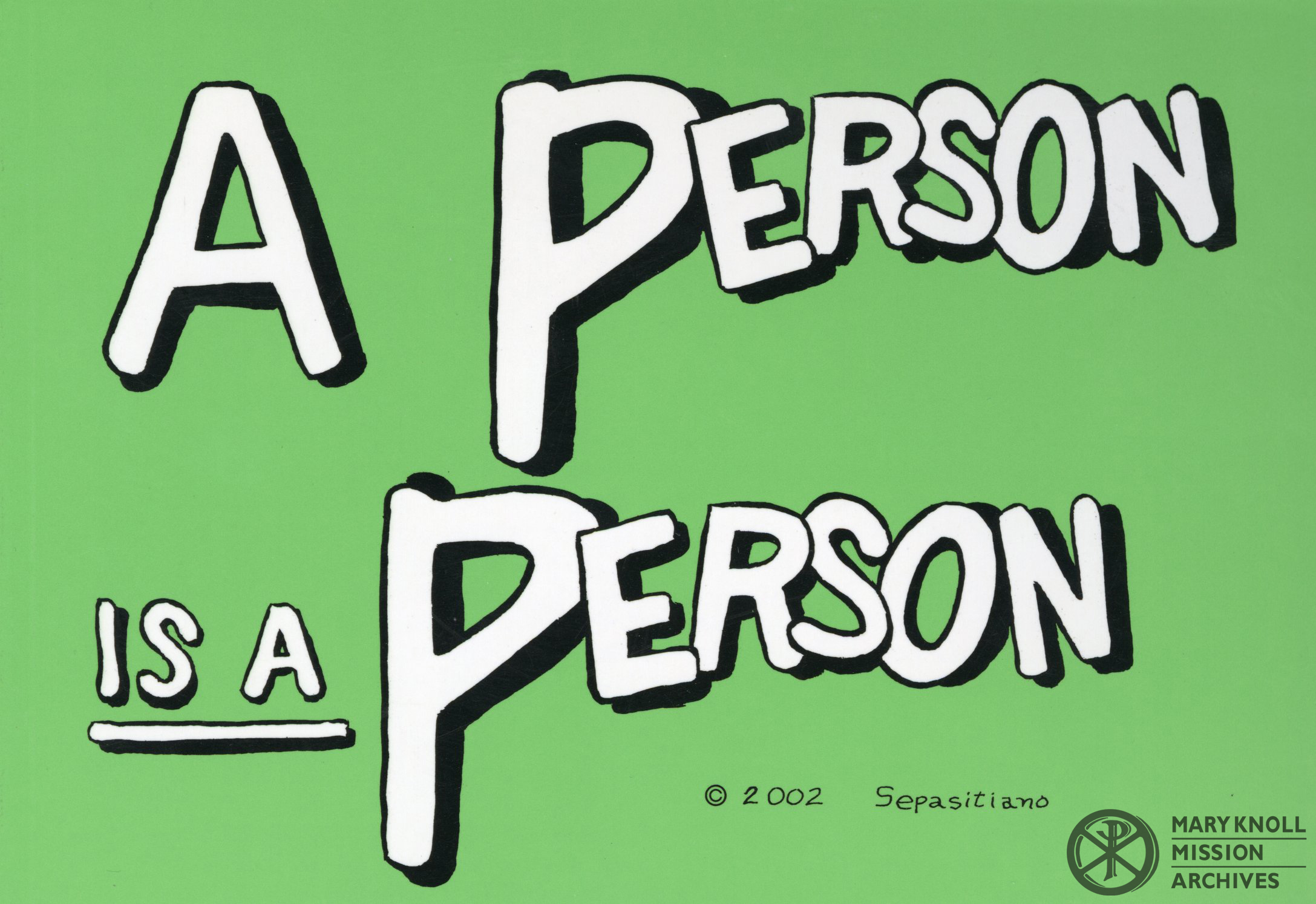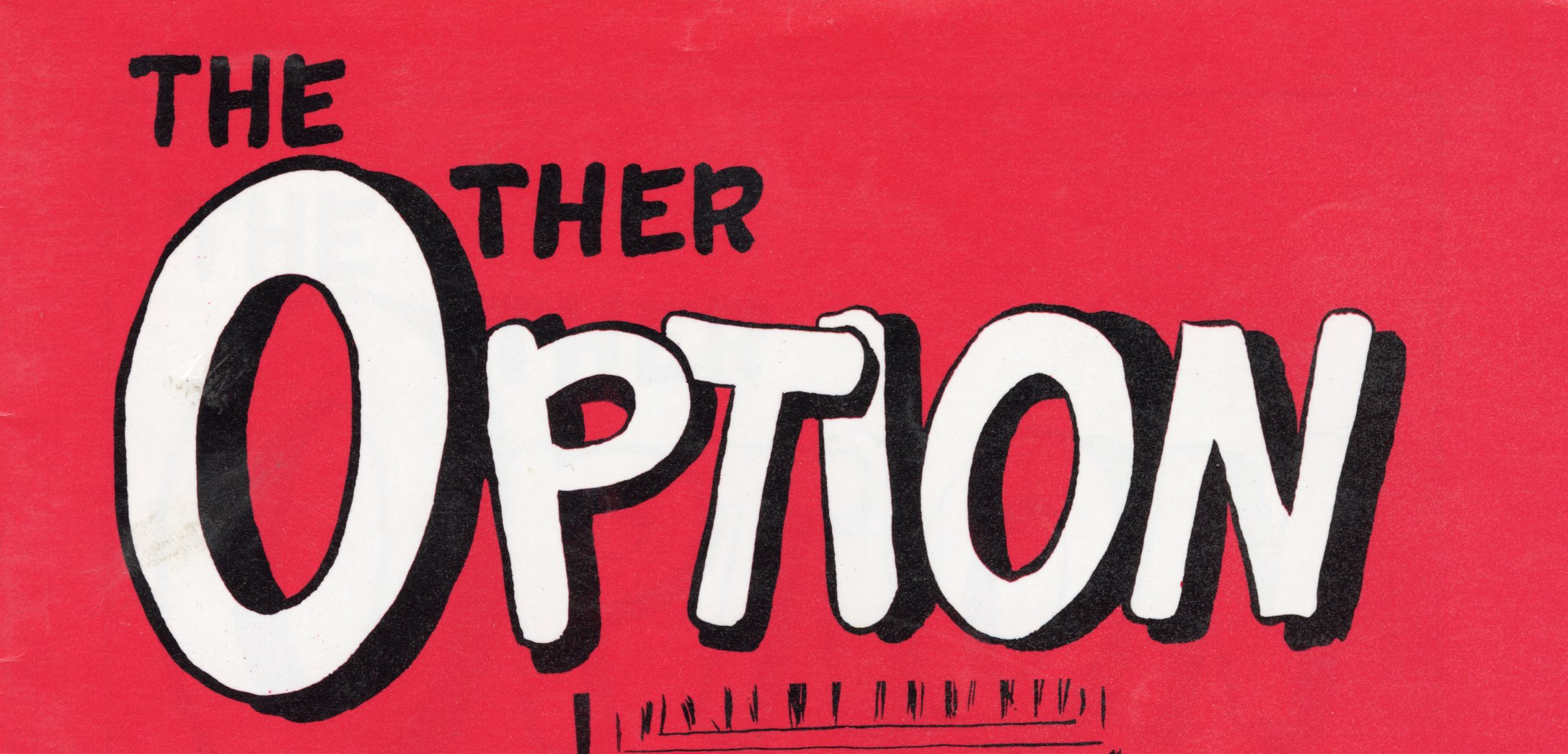Maryknoll’s own Comic Artist, Br. Sebastian Schwartz, MM was well known for using art and illustration for his mission work. Previously we looked at how Br. Schwartz combines native traditions with Christian Values in Toa: Warrior of the Sunrise, and Br. Schwartz’s historical work through his graphic novel about Joan of Arc. In celebration of the Jubilee Celebration for People with Disabilities, we will now turn our gaze to The Melting Pot Gang, Br. Schwartz’s efforts to advocate for people with any type of disability.
As we dive into this comic series, it’s important to note that Br. Schwartz did not work alone. He collaborated with two other missioners: Fr. Adam Gudalefsky, MM in Hong Kong and Sister Concepcion (Ching) Madduma, ICM in India. Together, these three formed a team of Disability Advocates that brought social awareness towards physical and intellectual disabilities. Over the course of this post, I will give an overview of The Melting Pot Gang, showcase several panels from its run, and describe the role these three missioners played in its creation.
STOP! It’s Disclaimer Time!
Before we jump into this topic, we should discuss terminology surrounding people with disabilities. Language evolves over time, especially with what is acceptable to say and in what contexts. Generally the “Hard R”, even in a medical context, is frowned on in the present, even if it was an acceptable term in the 1990’s. Other terms such as “handicap”, “special” and “cripple” are generally discouraged, but still used in unique circumstances.
When we look back on this comic, produced mainly in the 1990’s and early 2000’s, we must take this into account. I have done my best to showcase panels that use modernly acceptable terms, but understand that words we find unacceptable today were a part of common lexicon even a few years ago. My text will generally conform to Stanford University’s guidelines, but these are historic works that come from a different time and should be treated as such.
The Melting Pot Gang
The Melting Pot Gang was first published in 1992, intent on establishing social awareness about physical and intellectual disabilities. Br. Schwartz took inspiration from David Werner’s book, Disabled Village Children, supplemented by the lived experience of Sr. Madduma. He worked directly with Fr. Gudalefsky, whom acted as a publisher for the volumes. The team also worked to translate the comic into Hindi and Chinese for use in their personal missions.
When The Melting Pot Gang was first published, its goal was to act as a model for others to “do even better”. The team wanted to transform how advocates spread information about issues regarding people with disabilities. Their goal was to establish a precedent for how to depict the everyday lives of people with disabilities. The comic showcased that they were like any other person, just with unique characteristics. Over time the comic evolved to include additional disabilities, ongoing storylines, and a tasteful dose of comedy.
Enjoy the surrounding panels, which show how people with disabilities are like anyone else: with feelings, thoughts, and talents of their own.
Love Thy Disability
In the creation of The Melting Pot Gang, Br. Schwartz acted as the illustrator and writer. He was the main drive behind the creative elements of the comics. The topics discussed throughout its 11 volumes reflect the real life experiences of people with disabilities. Its themes are numerous, such as how those with disabilities are just people. Other themes include depicting one’s unique talents, creation of a loving community, supporting others, being kind to others who are different, and featuring assorted philosophical concepts and phrases.
The theme that seemed like the underlying heart of the comic was to Love Thyself, disability and all. Over The Melting Pot Gang‘s hundreds of strips, we see a variety of physical and intellectual disabilities. Br. Schwartz treats all with respect, depicting them as real people. This includes insecurities that are common in people with disabilities, particularly with physical traits. Through this comic, Br. Schwartz shows you can learn to be comfortable and embrace yourself for who you are. In addition, not only can you love yourself, others can love you. Over the course of the series, characters fall in love, some start families, and create a tight-knit community.
The following panels are just a few examples of Br. Schwartz’s message of Love Thyself and Thy Disability.
An Unstoppable Team
The Melting Pot Gang was a collaborative effort. In the previous section we shone the spotlight on Br. Schwartz as illustrator and writer. Now we will focus on the other two members of the team: Fr. Adam Gudalefsky and Sr. Concepcion Madumma.
From the beginning, Fr. Gudalefsky’s mission was to work with children with disabilities. His work started in his parish in Hokkaido, Japan educating the children with intellectual disabilities. In 1977, his assignment moves to Nepal where he establishes the HANDS (Human and National Development Service) and other educational programs. This focus furthers in 1983 when he is assigned to Hong Kong. Fr. Gudalefsky founds INTERAID, Inc to increase social awareness towards disabilities, create literacy and education programs, and manage a myriad of aid initiatives. It is through INTERAID that The Melting Pot Gang and other disability-focused materials are published.
The last component needed to create The Melting Pot Gang is a to add a certain authenticity to the work. This is where Sr. Concepcion Madumma comes in with a long history of educating children with disabilities in India. She is a Filipino nun with a lived experience as an educator of people with disabilities. She supplemented the narrative and lessons of the comic with real life stories from her mission. In addition, Sr. Madumma helped translate the work into Hindi and bring the materials to a whole new audience.
Additional Collaborations
The Melting Pot Gang ran from from 1992 to 2000, and then 2012 to 2013. With a total of 11 volumes, the comic served as an educational, sometimes funny, and wholesome work of art. It is but one of many collaborations between Br. Schwartz, Fr. Gudalefsky, and Sr. Madumma.
The other main publication created by the team was a book published by Fr. Gudalefsky titled A Person Is A Person. The work educated its reader about more serious disabilities, and serves as a psuedo sequel to the initial run of The Melting Pot Gang. It is constructed as a graphic novel, following two reporters tasked with writing respectful articles about people with disabilities. The team also created other materials, such as educational booklets for parents with disabled children and another series about HIV/AIDS titled The Other Option.
Fr. Gudalefsky and Sr. Madumma worked alongside each other for many years after the publishing of these materials. They travelled across the globe, hosting retreats and lecture programs for educators and conducting advocacy seminars. One can only guess at their impact over the last three decades of advocacy and educational work.

